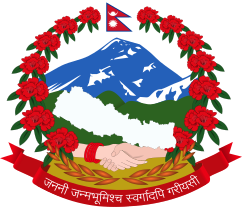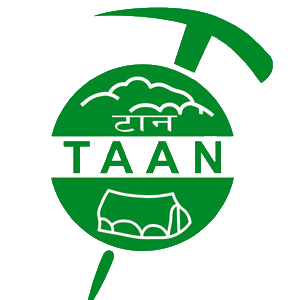Tibet
Tibet, known to most as the ‘roof of the world’, lies on a plateau at an average altitude of 4,000 m above sea level. The land and the sky are potent with spiritual energy and shrouded in mysticism. In addition to being home to Mount Everest, Tibet also hosts Mount Kailash. It is the sacred abode of Lord Shiva, according to Hindu mythology. But Tibet is more renowned for Buddhism, or rather as one of the spiritual epicenters of Buddhism. The entire plateau is dotted with exquisite monasteries, palaces, and mountain shrines.
If you are planning to travel to Tibet, snow-capped peaks, desolate steppes, rugged valleys, and high-altitude glacial lakes should all be on your checklist. It is also home to eleven 8000-m peaks, mostly on the borders with Nepal, India, and Bhutan. The majority of the tours going to Tibet are physically challenging. This is mainly due to the consistently high altitudes along which tourists will be traveling. The terrains can be rough as well. But the amazing views of snow-capped mountains and Tibetan landscapes, along with the experience of monasteries and Tibetan Buddhism make up for all the hardships.
Far Out Nepal has been operating various tours and treks in Tibet for years. Although we are based in Nepal, we have built up a lot of intimate local knowledge. If you would like to travel with us, please send us an email. We can put together a package for a good value.
Packages
All tourists visiting Tibet requires valid China visa & a special Alien Travel Permit, which they can obtain only by joining tours organized by recognized travel agencies.
If you are travelling from Kathmandu you will need to obtain the visa here. Those visa issued by Chinese Consulate outside of Kathmandu will not be entertained.
There is no minimum group size requirement for traveling into Tibet. As long as one is traveling in an organized tour visa will be issued for even individuals. Please note Tibet visa regulations often change & hence given information may not be true at the time when you travel. Please check with us or with concerned Chinese Embassies in your respective countries for latest visa regulation rules about visiting Tibet before making your travel plans.
Diplomatic passport holders must get clearance from Beijing for travel into Tibet, which often takes long time. It is advisable to travel on non-diplomatic passports, if you have one.
We require at least 14 days notice to process your Tibet visa via Lhasa & at least 4 days in Kathmandu for the Chinese Embassy to handle your passport. Consular section of the Chinese Embassy is open for business between 10-12 am on Monday, Wednesday & Friday only.
Those entering via Mainland China must pay a handling charge of USD 50 to our China agent for handling Tibet permits, booking & issuing flight tickets.
Tibetan & Mandarin Chinese
The Tibetan Buddhism & Bon
Local Time = UTC +8h | Actual Time: Thu-Aug-25 15:35
Chinese Yuan Renminbi (CNY)
Tibet is connected to other parts of the world by air, road and train. There are flights flying to Lhasa from Kathmandu and other parts of China. Also Lhasa is connected by train from Beijing. Since road has been well developed in Tibet you can also approach Tibet by road either through China or Nepal.
Tibet is possible to visit throughout year, except from mid- February to beginning of April when it is officially closed. But the best time would be from middle of April till June when the weather becomes warmer than the winter time and you can have a view of the mountains. September to middle of October is another good period to travel to Tibet.
Tibet is cold in winter, cool in summer and generally dry, receiving only 45 cm (18 inches) or rain or snow annually. Temperatures can vary greatly within a day, however, passing 29ºC (85ºF) in desert areas in summer, and plunging below 4ºC (40ºF) at night. The higher you go the colder it gets, of course. Sunlight is extremely intense. Winds in winter are ferocious. Rainfall in southern Tibet occurs intermittently between June and September, bringing moisture to barley fields and greenery to the valleys.
Chinese Yuan is also known as Ren minbi (RMB). Notes come in denomination of 1, 5, 10, 20, 50, and 100 Yuan. The current rate of the Yuan is about 6.50 for 1 US Dollar. However the exchange rate keep changing and it is better to recheck again before you go.
Since Tibet being in the high elevation your health can be effected by altitude problem. For those having the history of heart disease, lung disease travelling to Tibet is not recommended. While travelling to Tibet please make sure that your health is perfectly well. Lhasa & Shigatse are quite equipped with medical services but in other places it is very difficult. More precautions is needed if you are travelling to more remote area. It will be safe to travel with a well-stocked medical kit and knowledge of how to use it.
Immunizations is not really required for entering Tibet but for those travelers arriving from countries with risk of yellow fever transmission yellow fever vaccination certificate is needed. We advise you to consult with your doctor atleast 08 weeks before travelling.
Warm clothing is required throughout but more specifically from October to April. In general dressing in layers is recommended. Few changeable clothing such as shirt, sweater, jacket & cotton inner linings, comfortable walking shoes, and pair of pants should suffice. Between the months of October to April more heavy woolen or down feather clothing & boots will be required.
Tibetan festivals are held according to the Tibetan lunar calendar which usually lags at least a month behind Gregorian calendar. The exact dates of the festival are fixed by monasteries.














